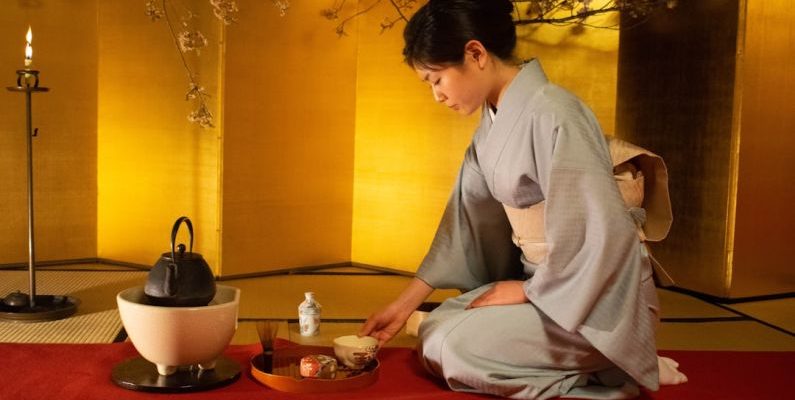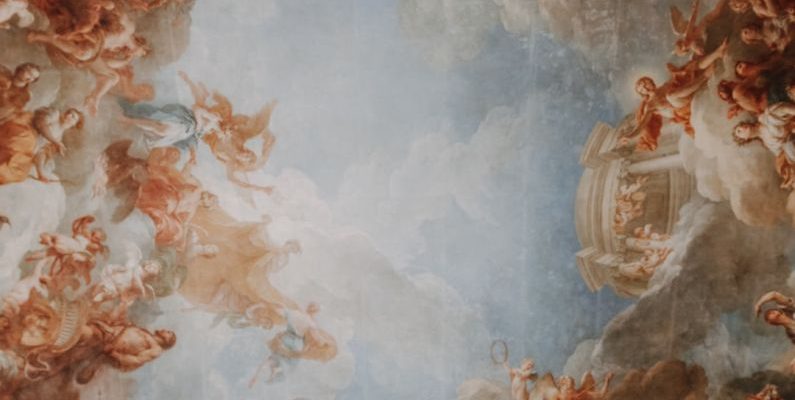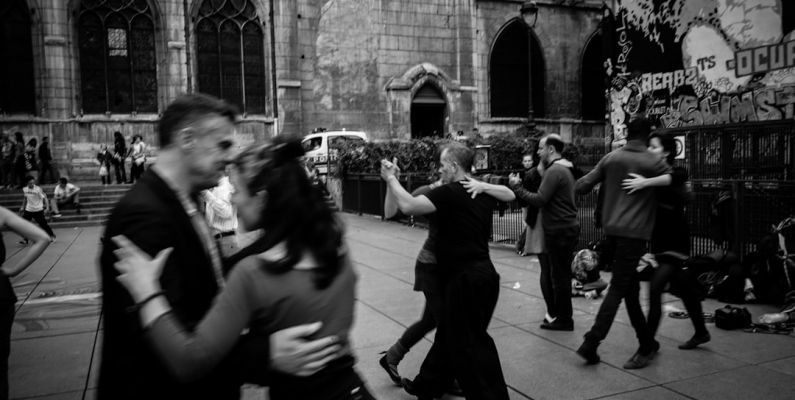Cultural Insights
In today's fast-paced world filled with constant hustle and bustle, many people are seeking ways to find comfort, coziness, and a sense of well-being in their daily lives. One concept that has gained significant popularity in recent years is the Scandinavian idea of hygge. Pronounced "hoo-ga," this Danish term encompasses a feeling of warmth, contentment, and togetherness, making it a key component of Nordic culture and lifestyle. Understanding the essence of hygge can provide valuable insights into how we can cultivate a more balanced and harmonious approach to our everyday experiences.
The Origins of Hygge
Hygge has its origins in Denmark and is deeply ingrained in the cultural fabric of the Scandinavian region. While it is challenging to translate hygge directly into English, it is often described as a feeling of well-being and coziness that comes from enjoying the simple things in life. The concept of hygge is rooted in creating a warm and inviting atmosphere, whether at home with loved ones or out in nature, to promote relaxation and a sense of belonging.Creating a Hygge Environment
One of the fundamental aspects of hygge is the importance of creating a cozy and inviting environment that promotes relaxation and comfort. This can involve incorporating soft lighting, such as candles or fairy lights, using natural materials like wood and wool, and surrounding oneself with items that evoke a sense of warmth and nostalgia. Creating a hygge atmosphere is about fostering a feeling of sanctuary where you can unwind and connect with yourself or loved ones.Embracing Simple Pleasures
At the heart of hygge is the idea of embracing simple pleasures and finding joy in the little things. Whether it's enjoying a cup of hot tea by the fireplace, snuggling up with a good book, or spending quality time with friends and family, hygge encourages us to slow down and savor the present moment. By focusing on experiences rather than material possessions, we can cultivate a deeper appreciation for the beauty and richness of life.Finding Hygge in Nature
Nature plays a significant role in the concept of hygge, with Scandinavians often seeking solace and tranquility in the great outdoors. Whether it's taking a leisurely walk in the forest, having a picnic by the lake, or simply basking in the beauty of the natural world, immersing oneself in nature can evoke a profound sense of peace and well-being. Connecting with the rhythms of the natural world can help us feel grounded and rejuvenated, providing a much-needed respite from the demands of modern life.Hygge and Social Connections
Another essential aspect of hygge is the emphasis on building strong social connections and fostering a sense of community. Whether it's hosting a cozy dinner party, gathering around a bonfire with friends, or simply sharing a meal with loved ones, hygge encourages us to prioritize quality time spent with the people who matter most to us. By nurturing meaningful relationships and creating a sense of togetherness, we can cultivate a supportive network that brings joy and fulfillment to our lives.The Benefits of Embracing Hygge
Embracing the concept of hygge can have significant benefits for our overall well-being and mental health. By incorporating elements of coziness, simplicity, and connection into our daily lives, we can reduce stress, increase feelings of happiness, and create a sense of balance and harmony. Hygge reminds us to slow down, appreciate the beauty of the present moment, and prioritize self-care, ultimately leading to a more fulfilling and meaningful life.Incorporating Hygge into Your Life
Integrating hygge into your daily routine doesn't have to be complicated or expensive. Simple practices such as lighting a candle, taking a relaxing bath, or enjoying a home-cooked meal with loved ones can help create a sense of hygge in your life. By focusing on creating a cozy and inviting atmosphere, embracing simple pleasures, connecting with nature, and nurturing social connections, you can cultivate a greater sense of well-being and contentment in your everyday experiences. In summary, the Scandinavian concept of hygge offers valuable insights into how we can cultivate a sense of coziness, contentment, and well-being in our lives. By embracing simple pleasures, creating a warm and inviting atmosphere, connecting with nature, and prioritizing social connections, we can foster a deeper appreciation for the beauty and richness of life. Incorporating elements of hygge into our daily routines can lead to greater happiness, reduced stress, and a more balanced and harmonious approach to living. So why not embrace the spirit of hygge and start creating your own cozy sanctuary today?
Nestled along the picturesque Mediterranean coastline, the French Riviera is a region renowned for its exquisite beauty, rich cultural heritage, and vibrant artistic scene. From the azure waters of the Côte d'Azur to the charming villages perched on the hillsides, this sun-kissed paradise offers a harmonious blend of art and nature that continues to captivate visitors from around the world.
**A Tapestry of Artistic Splendor**
The French Riviera has long been a magnet for artists, drawn to its luminous light, vivid colors, and breathtaking landscapes. The region's artistic legacy is palpable, with a multitude of museums, galleries, and art festivals that pay homage to its creative spirit. One of the most iconic figures associated with the Riviera is the legendary painter Henri Matisse, who found inspiration in the region's radiant hues and geometric forms. The Matisse Museum in Nice showcases a remarkable collection of the artist's works, providing a glimpse into his profound connection to the Riviera.
**A Cultural Melting Pot**
In addition to its artistic allure, the French Riviera is a melting pot of diverse cultures and influences. From the glamorous allure of Cannes to the bohemian charm of Saint-Paul-de-Vence, each town and village along the coast exudes its own unique character and history. The historic town of Antibes, with its cobblestone streets and ancient ramparts, is a treasure trove of artistic heritage, boasting the Picasso Museum, where visitors can admire the works of the iconic Spanish artist.
**Nature's Masterpiece**
Beyond its cultural riches, the French Riviera is a natural masterpiece, characterized by its stunning landscapes and Mediterranean flora. The region's lush gardens, such as the Jardin Exotique in Monaco and the Villa Ephrussi de Rothschild in Saint-Jean-Cap-Ferrat, offer a tranquil oasis of beauty and serenity. The fragrant lavender fields of Provence and the rugged cliffs of the Cap d'Antibes provide a dramatic backdrop for leisurely strolls and scenic drives, inviting visitors to immerse themselves in the splendor of nature.
**The Art of Gastronomy**
No visit to the French Riviera would be complete without indulging in its sumptuous culinary delights. The region's gastronomy is a feast for the senses, with an abundance of fresh seafood, flavorful olive oils, and aromatic herbs that reflect the bountiful harvest of the land and sea. From Michelin-starred restaurants to quaint bistros tucked away in hidden alleyways, the Riviera offers a myriad of dining options to satisfy every palate.
**The Eternal Allure**
As the sun sets over the shimmering waters of the Mediterranean, casting a golden glow over the coastal towns and villages, it becomes evident why the French Riviera has long been a muse for artists and a playground for the elite. Its timeless allure, characterized by a harmonious blend of art and nature, continues to enchant and inspire all who are fortunate enough to experience its beauty. Whether exploring the vibrant art scene, savoring the flavors of Provencal cuisine, or simply basking in the warmth of the Mediterranean sun, the French Riviera beckons with its irresistible charm and promises a journey of discovery and delight.
Samoan tattoos, also known as tatau, are deeply rooted in the rich culture and history of Samoa. These intricate designs have fascinated people around the world for their unique patterns and spiritual significance. From traditional hand-tapped tattoos to modern machine-made designs, Samoan tattoos continue to be a symbol of pride, identity, and heritage for the Samoan people.
The Origins of Samoan Tattoos
Samoan tattoos have a long and storied history that dates back thousands of years. In ancient Samoa, tattoos were a rite of passage, marking significant milestones in a person's life. These tattoos were not only decorative but also served as a form of protection and a means of expressing one's identity and status within the community. Traditional Samoan tattoos were hand-tapped using a series of sharp tools made from bone, teeth, or shells. The process was not only painful but also highly intricate, with each design holding specific meanings and symbolism. These tattoos were typically applied to the body's midsection, covering the chest, back, and thighs, and were considered a mark of strength, courage, and resilience.Evolution of Samoan Tattoos
In recent years, Samoan tattoos have evolved to incorporate modern techniques and styles while still preserving their traditional roots. Today, many Samoan tattoo artists use tattoo machines to create intricate designs that pay homage to the ancient art form. These contemporary tattoos often feature a mix of traditional Samoan motifs, such as turtles, shells, and waves, blended with modern elements to create a unique and personalized design.The Meaning Behind Samoan Tattoos
Each element of a Samoan tattoo holds deep symbolism and meaning, reflecting the wearer's personal journey, beliefs, and values. From the intricate patterns to the placement of the tattoo on the body, every aspect of a Samoan tattoo tells a story. For example, a turtle symbolizes longevity and wisdom, while a shark tooth represents protection and strength. These symbols are often combined to create a cohesive design that reflects the wearer's heritage and cultural identity.The Cultural Significance of Samoan Tattoos
Samoan tattoos play a vital role in preserving and celebrating the rich cultural heritage of Samoa. For many Samoans, getting a tattoo is a sacred and deeply spiritual experience that connects them to their ancestors and traditions. The process of receiving a Samoan tattoo involves not only the physical act of getting inked but also a spiritual journey that honors the gods and spirits that guide and protect the wearer.The Impact of Samoan Tattoos on Popular Culture
In recent years, Samoan tattoos have gained popularity in mainstream culture, with many celebrities and athletes sporting these intricate designs. From Dwayne "The Rock" Johnson to the Samoan rugby team, these tattoos have become a symbol of strength, resilience, and cultural pride. In the world of fashion and entertainment, Samoan tattoos have inspired countless people to explore and embrace the beauty and symbolism of this ancient art form.Appreciating the Artistry of Samoan Tattoos
Samoan tattoos are not just designs inked on the skin; they are a form of art that celebrates the rich history and traditions of Samoa. The intricate patterns, bold lines, and deep symbolism of these tattoos reflect the craftsmanship and skill of the tattoo artists who create them. Whether hand-tapped or machine-made, Samoan tattoos continue to captivate and inspire people around the world with their beauty and cultural significance.Embracing the Legacy of Samoan Tattoos
As we delve into the depths of Samoan tattoos, we uncover a treasure trove of history, symbolism, and cultural significance. These timeless designs serve as a reminder of the resilience and strength of the Samoan people and their enduring connection to their heritage. By embracing and honoring the legacy of Samoan tattoos, we pay tribute to the artistry and craftsmanship of this ancient art form that continues to thrive and inspire generations to come.
When we think of Italian cuisine, the first dishes that come to mind are typically pizza and pasta. However, Italy's culinary tradition is much more diverse and rich than these two popular staples. From the northern regions of Piedmont and Lombardy to the southern regions of Sicily and Sardinia, Italian cuisine offers a vast array of flavors and ingredients that reflect the country's diverse landscapes and history.
Exploring Italian Antipasti
Before delving into the main courses, let's start with antipasti, the traditional Italian appetizers that set the stage for a delightful meal. Antipasti can range from simple bruschetta with tomatoes and basil to more elaborate dishes like prosciutto-wrapped melon or bresaola with arugula and shaved Parmesan. These starters showcase the freshest ingredients and flavors of Italy, often accompanied by a glass of prosecco or a crisp white wine.Savoring Risotto from the North
Moving on to the northern regions of Italy, we encounter the beloved dish of risotto. While pasta may reign supreme in the south, risotto is the star of the show in the north. Made with Arborio or Carnaroli rice, risotto is cooked slowly with broth until it reaches a creamy consistency. Varieties such as risotto ai funghi (mushroom risotto) and risotto alla Milanese (saffron risotto) highlight the skillful preparation and attention to detail that characterize northern Italian cuisine.Indulging in Seafood along the Coast
Italy's extensive coastline provides an abundance of fresh seafood that plays a prominent role in regional cuisines. From the Ligurian coast in the northwest to the Adriatic Sea in the northeast, seafood dishes vary greatly depending on the local catch. Delicacies like fritto misto (mixed fried seafood) from Venice, spaghetti alle vongole (spaghetti with clams) from Naples, and pesce al cartoccio (fish cooked in parchment) from Sicily showcase the diversity and creativity of Italian seafood preparations.Embracing the Flavors of Tuscany
Tuscany, with its rolling hills and fertile landscapes, is known for its rustic yet elegant cuisine. Dishes like bistecca alla Fiorentina (Florentine steak), ribollita (Tuscan bread soup), and pappa al pomodoro (tomato and bread soup) highlight the region's emphasis on simple, high-quality ingredients. Olive oil, fresh herbs, and hearty legumes feature prominently in Tuscan cooking, creating dishes that are both comforting and full of flavor.Discovering the Culinary Traditions of Sicily
In the southern region of Sicily, a unique blend of Italian, North African, and Middle Eastern influences gives rise to a distinctive culinary tradition. Sicilian cuisine is characterized by bold flavors, vibrant colors, and a diverse range of ingredients. From arancini (rice balls filled with meat or cheese) to caponata (sweet and sour eggplant stew) and cassata (ricotta-filled sponge cake), Sicilian dishes offer a sensory journey through history and culture.Celebrating Italy's Sweet Endings
No Italian meal is complete without a sweet ending, and Italy has a rich tradition of desserts and pastries to satisfy any sweet tooth. Tiramisu, the iconic coffee-flavored dessert from Veneto, is a beloved classic that has gained international fame. Other delights like cannoli from Sicily, panna cotta from Piedmont, and gelato from all over Italy showcase the country's passion for indulgent treats made with the finest ingredients.Appreciating Italian Cuisine: A Culinary Journey
Italian cuisine is a culinary journey that goes far beyond pizza and pasta. From the appetizing antipasti to the sumptuous seafood dishes, the comforting flavors of Tuscany to the bold creations of Sicily, and the irresistible sweetness of Italian desserts, every region offers a unique and delicious experience. So, next time you sit down to enjoy an Italian meal, remember to explore beyond the familiar favorites and savor the diverse and delightful flavors that Italy has to offer. Buon appetito!
In the vast tapestry of human intellectual history, the contributions of Ancient Greek philosophers stand out as timeless beacons of wisdom that continue to influence and shape our modern lives. From the profound musings of Socrates to the metaphysical inquiries of Plato and the empirical observations of Aristotle, the legacy of these ancient thinkers reverberates through the corridors of time, offering us valuable insights into the nature of existence, the pursuit of truth, and the essence of a virtuous life. By delving into the rich philosophical tradition of ancient Greece, we can glean valuable lessons that are as relevant today as they were thousands of years ago.
The Pursuit of Knowledge
At the heart of Ancient Greek philosophy lies a relentless pursuit of knowledge and truth. The great philosopher Socrates, often hailed as the father of Western philosophy, famously declared that "the unexamined life is not worth living." This profound statement encapsulates the essence of philosophical inquiry – the relentless quest to uncover the underlying truths that govern our existence. In our modern world, where information is abundant but wisdom is scarce, the teachings of Socrates remind us of the importance of critical thinking, self-reflection, and intellectual humility. By embracing a Socratic approach to knowledge, we can navigate the complexities of the 21st century with clarity and purpose.Ethics and Virtue
Another enduring legacy of Ancient Greek philosophy is its emphasis on ethics and virtue. The works of philosophers such as Aristotle delve deeply into the nature of morality, the cultivation of character, and the pursuit of excellence. Aristotle's concept of eudaimonia, often translated as "happiness" or "flourishing," posits that true fulfillment comes from living a life of virtue and moral excellence. In a world where material success is often equated with happiness, the teachings of Aristotle serve as a powerful reminder that true fulfillment stems from inner goodness and ethical integrity. By embracing the virtues espoused by ancient Greek philosophy – courage, wisdom, temperance, and justice – we can lead lives of purpose and meaning in an increasingly chaotic world.The Nature of Reality
Ancient Greek philosophy also grappled with profound questions about the nature of reality and the essence of existence. The metaphysical inquiries of philosophers like Plato laid the groundwork for Western philosophical thought, exploring concepts such as the nature of the soul, the existence of an ultimate reality, and the relationship between the material world and the world of ideas. In our modern age, where scientific discoveries continue to expand our understanding of the universe, the metaphysical speculations of ancient Greek philosophers offer us a different lens through which to view the mysteries of existence. By engaging with the profound metaphysical questions posed by ancient Greek philosophy, we can cultivate a deeper appreciation for the interconnectedness of all things and the enduring mysteries that lie at the heart of human experience.The Legacy of Ancient Greek Philosophy
As we navigate the complexities of modern life, the teachings of Ancient Greek philosophy offer us a guiding light – a timeless beacon of wisdom that illuminates our path and enriches our understanding of the world. By embracing the pursuit of knowledge, ethics, and metaphysical inquiry championed by the ancient Greek philosophers, we can cultivate a deeper sense of purpose, meaning, and fulfillment in our lives. In a world marked by uncertainty and change, the enduring legacy of Ancient Greek philosophy serves as a reminder of the enduring power of human intellect, curiosity, and wisdom. Let us heed the lessons of the past as we forge ahead into the future, guided by the timeless insights of those who came before us.
Africa is a continent rich in culture and diversity, with a myriad of tribes each holding unique traditions and practices that have been passed down through generations. These tribal traditions are deeply rooted in the history and beliefs of the people, shaping their identities and fostering a sense of community and belonging. In this article, we delve into some fascinating African tribal traditions and explore the meanings behind them.
The Importance of Ancestral Worship
Ancestral worship is a common tradition among many African tribes, where the ancestors are revered and honored through rituals and ceremonies. The belief is that the spirits of the ancestors continue to watch over and protect their descendants, guiding them through life's challenges. Ancestral worship serves as a way to connect with the past and seek the wisdom and blessings of those who came before. It strengthens the bond between the living and the dead, ensuring that the legacy of the ancestors lives on in the hearts and minds of the tribe.Rites of Passage and Coming of Age Ceremonies
Coming of age ceremonies are significant events in many African tribes, marking the transition from childhood to adulthood. These ceremonies often involve elaborate rituals and tests that symbolize the challenges and responsibilities of adulthood. Young people are taught the values and traditions of their tribe, preparing them for their roles within the community. These rites of passage are a rite of passage is a crucial part of cultural preservation and identity, ensuring that the traditions and customs of the tribe are passed on to the next generation.Dance and Music as a Form of Expression
Dance and music play a vital role in African tribal traditions, serving as a form of expression and communication. Each tribe has its unique styles of dance and music, with rhythms and movements that reflect their cultural heritage. Dance and music are used in various rituals and ceremonies, from celebrations to mourning, creating a sense of unity and solidarity among the tribe members. Through dance and music, the stories and history of the tribe are passed down, preserving their traditions for future generations.Symbolism in Tribal Art and Crafts
Tribal art and crafts are not just decorative pieces but hold deeper meanings and symbolisms that reflect the beliefs and values of the tribe. From intricate beadwork to colorful textiles, each piece of art tells a story and carries a message. Symbols such as animals, plants, and geometric patterns are often used to represent aspects of nature, spirituality, and the tribe's history. Tribal art serves as a visual language, communicating the tribe's identity and cultural heritage to the world.Connection to Nature and the Spirit World
Many African tribes have a deep connection to nature and the spirit world, believing that all living things are interconnected and interdependent. Nature is revered and respected, with rituals and ceremonies performed to honor the land, animals, and plants. The spirit world is also an essential part of tribal beliefs, with shamans and spiritual leaders acting as intermediaries between the physical and spiritual realms. This connection to nature and the spirit world shapes the tribe's worldview and influences their daily lives and practices.Celebrating Diversity and Unity in African Tribal Traditions
African tribal traditions are as diverse as the continent itself, with each tribe contributing its unique customs and practices to the rich tapestry of African culture. Despite the differences, there is a common thread that binds these tribes together - a deep sense of community, identity, and pride in their heritage. Through their traditions, African tribes celebrate the richness of their cultural diversity while fostering unity and solidarity among their members. In conclusion, African tribal traditions are not just rituals and practices but are a way of life that embodies the beliefs, values, and history of the people. These traditions are a testament to the resilience and creativity of African cultures, showcasing the beauty and complexity of the continent's heritage. By understanding and appreciating African tribal traditions, we can gain insight into the rich tapestry of human experience and celebrate the diversity that makes our world a vibrant and interconnected place.
The Renaissance, a period of profound cultural and intellectual transformation that spanned the 14th to the 17th centuries, marked a pivotal moment in European history. This era, often referred to as the "Age of Enlightenment," witnessed a resurgence of interest in art, literature, science, and philosophy, leading to significant advancements in various fields. The impact of the Renaissance was far-reaching, shaping the course of European civilization and laying the foundation for the modern world as we know it today.
The Revival of Classical Learning
One of the defining features of the Renaissance was the revival of classical learning, particularly the rediscovery of ancient Greek and Roman texts. Scholars and artists of the period sought to emulate the achievements of the ancient world, drawing inspiration from works of literature, philosophy, and art that had long been neglected. This renewed interest in classical antiquity fueled a spirit of intellectual curiosity and creativity that permeated all aspects of Renaissance culture.Humanism: Celebrating the Individual
At the heart of the Renaissance was the philosophy of humanism, which emphasized the value and potential of the individual. Humanist scholars championed the idea that human beings were capable of great achievements and should strive to fulfill their intellectual and creative potential. This focus on the individual as a rational and autonomous being laid the groundwork for the development of modern ideas about human rights, individualism, and personal agency.Artistic Innovation and Expression
The Renaissance was a golden age for the arts, with artists such as Leonardo da Vinci, Michelangelo, and Raphael producing masterpieces that continue to captivate audiences to this day. These creative geniuses pushed the boundaries of artistic expression, experimenting with new techniques and styles that revolutionized the art world. The period saw a shift from the flat, stylized figures of the medieval era to more lifelike and naturalistic representations, as artists sought to capture the beauty and complexity of the world around them.Scientific Revolution and Exploration
In addition to advancements in the arts, the Renaissance also witnessed significant progress in the field of science. Visionaries like Copernicus, Galileo, and Kepler challenged prevailing beliefs about the nature of the universe, laying the groundwork for the scientific revolution that would follow. These pioneering thinkers revolutionized our understanding of astronomy, physics, and mathematics, ushering in an era of unprecedented discovery and innovation.The Printing Press: A Catalyst for Change
The invention of the printing press by Johannes Gutenberg in the mid-15th century played a crucial role in spreading the ideas of the Renaissance throughout Europe. This revolutionary technology made it easier and more affordable to produce books, allowing for the rapid dissemination of knowledge and information. The printing press democratized learning, enabling a wider audience to access the works of Renaissance thinkers and fostering a climate of intellectual exchange and debate.Legacy of the Renaissance
The legacy of the Renaissance is evident in the enduring impact it has had on Western civilization. The period laid the foundation for the modern world, shaping our understanding of art, science, philosophy, and human nature. The spirit of creativity, curiosity, and innovation that defined the Renaissance continues to inspire us today, reminding us of the transformative power of human ingenuity and the enduring legacy of Europe's Age of Enlightenment.
In the vibrant streets of Buenos Aires, the music of tango fills the air, captivating the souls of those who hear its passionate rhythm. Tango, often referred to as the "dance of love," is more than just a dance; it is a cultural phenomenon that embodies the essence of Argentina. Originating in the working-class neighborhoods of Buenos Aires in the late 19th century, tango has evolved into a worldwide phenomenon, enchanting people with its sultry movements and melancholic melodies.
The Origins of Tango
Tango has humble beginnings, born in the marginalized neighborhoods of Buenos Aires among African, European, and indigenous influences. It emerged as a form of expression for the working-class immigrants who sought solace in the music and dance of their homeland. The fusion of these diverse cultural elements gave rise to a unique art form that spoke to the struggles and passions of the people. The music of tango is characterized by its melancholic melodies, often accompanied by the bandoneon, a type of accordion that adds a haunting quality to the music. The lyrics of tango songs often tell stories of love, loss, and longing, reflecting the emotional depth of the dance itself.The Dance of Passion
At the heart of tango lies the dance itself, a sensual and intimate expression of emotion between two partners. The close embrace, intricate footwork, and subtle communication between the dancers create a powerful connection that transcends words. Tango is a dance of passion, with each movement reflecting the desires and emotions of the dancers. The movements of tango are complex and precise, requiring both skill and intuition to execute. The dance is a dialogue between the dancers, with each partner responding to the movements of the other in a seamless exchange of energy and emotion. Tango is a dance of contradictions, combining strength and vulnerability, passion and restraint, in a mesmerizing display of human connection.The Tango Culture
Tango is more than just a dance; it is a way of life for many Argentinians. In Buenos Aires, tango is everywhere, from the milongas, or tango clubs, where dancers gather to socialize and dance, to the street corners where impromptu performances captivate passersby. Tango has become a symbol of Argentine identity, representing the country's rich cultural heritage and passionate spirit. The tango culture is deeply rooted in tradition, with strict codes of etiquette and behavior governing the dance. Respect for the music, the partner, and the dance itself is paramount in tango culture, creating a sense of reverence for the art form. Tango is a way for Argentinians to connect with their history, their community, and their emotions, in a celebration of life and love.The Global Impact of Tango
While tango originated in Argentina, its influence has spread far beyond its borders, captivating audiences around the world. Tango has become a symbol of passion and romance, with dancers from all corners of the globe embracing its sensual movements and evocative music. Tango festivals, competitions, and performances are held in cities worldwide, showcasing the universal appeal of this iconic dance. Tango has inspired artists, musicians, and filmmakers, who have incorporated its themes and aesthetics into their work. The music of tango has influenced genres as diverse as jazz, classical, and electronic music, demonstrating the enduring power of this art form to transcend cultural boundaries. Tango has become a symbol of Argentine culture, representing the country's resilience, creativity, and passion to the world.Embracing the Tango Spirit
Tango is more than just a dance; it is a way of connecting with others, expressing emotions, and celebrating life. Whether you are a seasoned dancer or a curious beginner, tango offers a unique opportunity to explore your emotions, connect with others, and embrace the passion that lies within you. So, next time you hear the seductive strains of a tango melody, don't resist the urge to move – let the heartbeat of Argentina guide you in a dance of love and passion. Tango is waiting for you to embrace its spirit and let it ignite your soul.
Camels have played a vital role in Arabian societies for centuries, serving as indispensable companions to the inhabitants of the desert regions. These majestic creatures have become synonymous with the Arab world, embodying resilience, adaptability, and strength. From transportation to trade, camels have been integral to the fabric of Arabian societies, shaping traditions and lifestyles in profound ways. Let's explore the multifaceted role of camels in Arabian societies.
**The Bedouin Way of Life**
For the Bedouin tribes of the Arabian Peninsula, camels have been a lifeline in the harsh desert environment. These nomadic people have relied on camels for survival, as these animals can endure long periods without water and navigate the vast desert landscapes with ease. Camels provided transportation for the Bedouins, allowing them to traverse the desert in search of food and water sources. The bond between the Bedouins and their camels is deeply rooted in mutual dependency, with each relying on the other for sustenance and companionship.
**Trade and Commerce**
Camels have long been prized for their role in trade and commerce in Arabian societies. Known as the "ships of the desert," camels were essential for transporting goods across long distances, connecting different regions and facilitating economic exchange. The camel caravans that traversed the deserts were instrumental in the development of trade routes, linking the Arabian Peninsula to distant lands and fostering cultural exchange. The camel's ability to carry heavy loads over rugged terrain made them indispensable for merchants and traders seeking to navigate the challenging desert environment.
**Cultural Significance**
Camels hold a special place in Arabian culture, symbolizing wealth, status, and hospitality. In traditional Arabian societies, owning camels was a sign of prosperity and social standing, with the number of camels a person owned reflecting their wealth. Camels were also used as dowry payments in marriages, highlighting their value in Arabian society. Additionally, camels have been celebrated in art, literature, and folklore, serving as iconic symbols of the desert landscape and the nomadic way of life.
**Camels in Modern Times**
While the role of camels in Arabian societies has evolved over time, these magnificent creatures continue to hold significance in the region. In contemporary Arabian societies, camels are still used for transportation, racing, and tourism, preserving the cultural heritage associated with these animals. Camel racing, in particular, has become a popular sport in the Arab world, attracting spectators from around the globe and showcasing the agility and speed of these remarkable animals.
**Preservation of Camel Heritage**
Efforts are being made to preserve and protect the heritage of camels in Arabian societies. Organizations dedicated to camel conservation work to ensure the welfare and sustainability of these animals, promoting responsible breeding practices and raising awareness about the importance of camels in Arabian culture. By safeguarding the genetic diversity of camel populations and supporting traditional camel-rearing practices, these initiatives aim to ensure that camels remain an integral part of Arabian societies for generations to come.
**In Conclusion: The Enduring Legacy of Camels**
Camels have left an indelible mark on Arabian societies, shaping traditions, economies, and cultural identities. As symbols of resilience and adaptability, camels embody the spirit of the desert and the enduring bond between humans and animals in the Arabian Peninsula. Despite the changing landscapes of modern times, camels continue to hold a special place in the hearts of the Arab people, serving as reminders of a rich heritage rooted in the sands of time. The legacy of camels in Arabian societies remains an enduring testament to the enduring connection between humans and these magnificent creatures.









